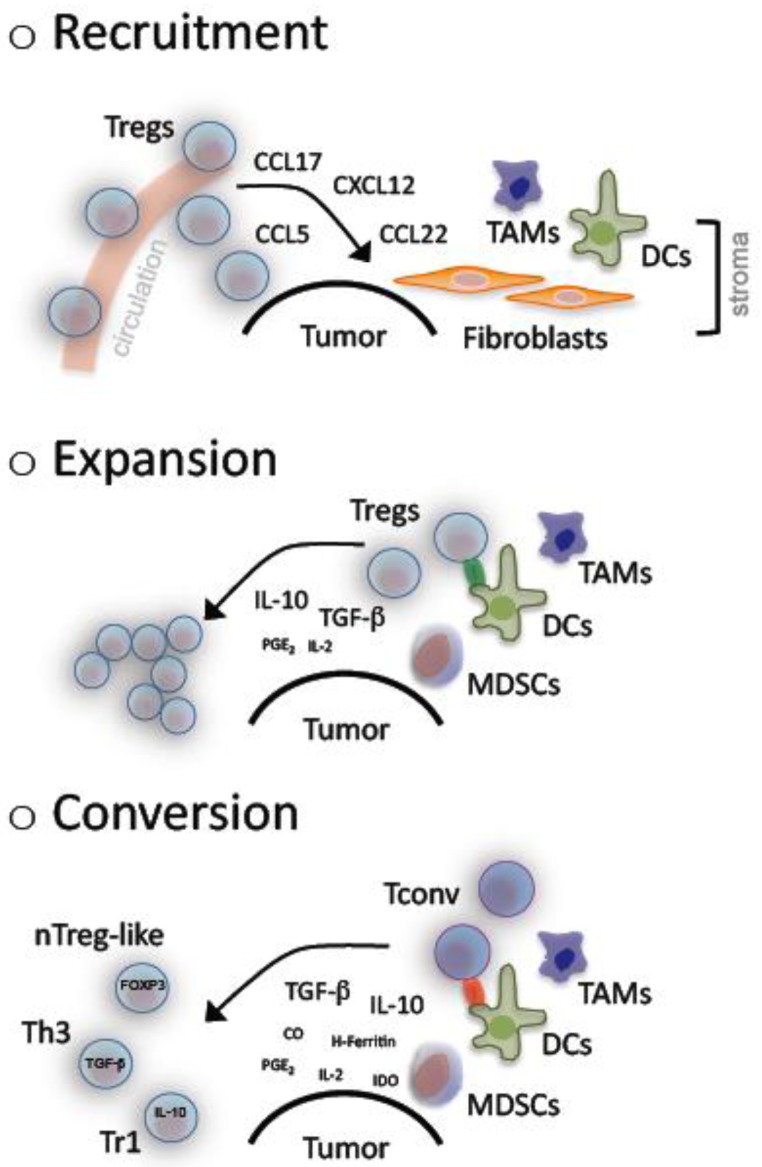Figure 1.
Accumulation of regulatory T cells in cancer. A number of mechanisms lead to the observed accumulation of regulatory T cells (Tregs) in cancer. Malignant cells and/or bystanding fibroblasts, dendritic cells (DCs) as well as tumor associated macrophages (TAMs) in the tumor stroma produce and secrete several chemokines, which are chemoattractive for Tregs and result in their recruitment from the circulation away to the tumor site. Pre-existing Tregs can clonally expand upon antigen-specific activation in presence of mainly TGF-β and IL-10 that are regularly found at high levels within the tumor microenvironment. These two cytokines together with a suboptimal antigen presentation that is provided by tolerogenic DCs, TAMs and/or myeloid derived suppressor cells (MDSCs) additionally promote the conversion of conventional T cells (Tconv) into suppressive, adaptive Tregs including naturally occuring (n) Treg-like, T helper (h) 3 and T regulatory (r) 1 cells.

